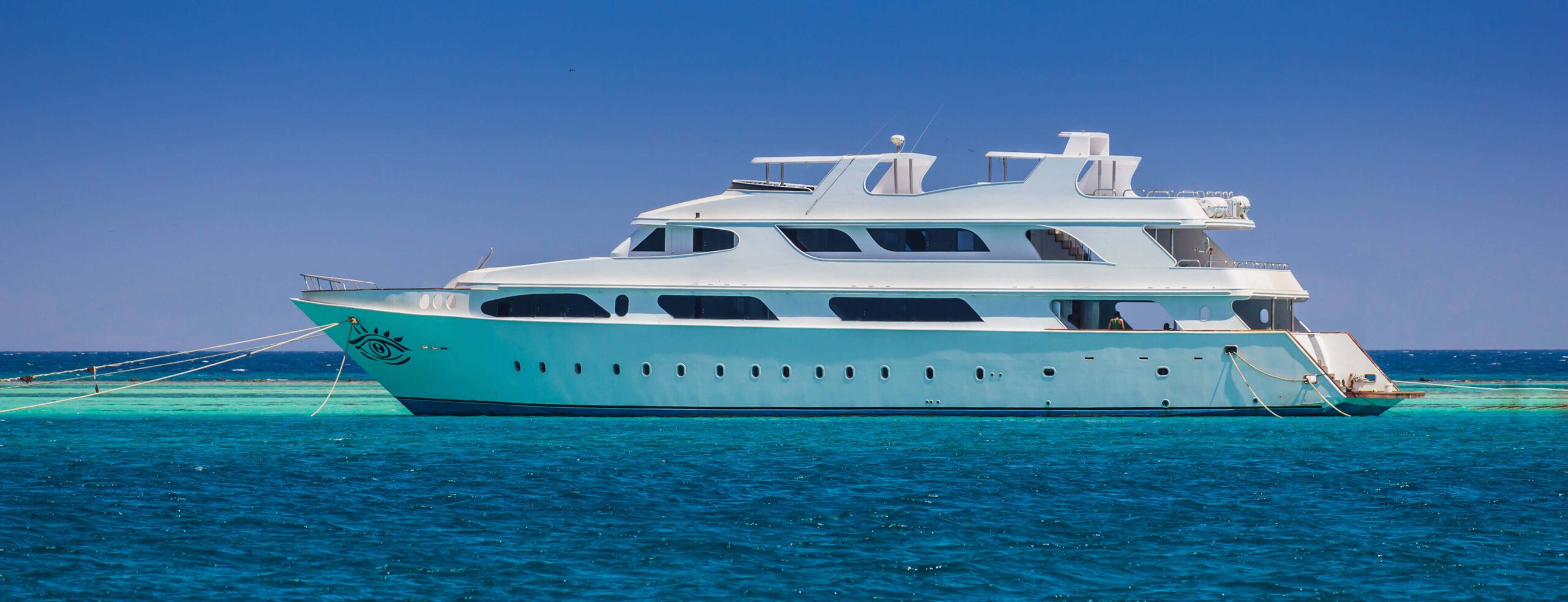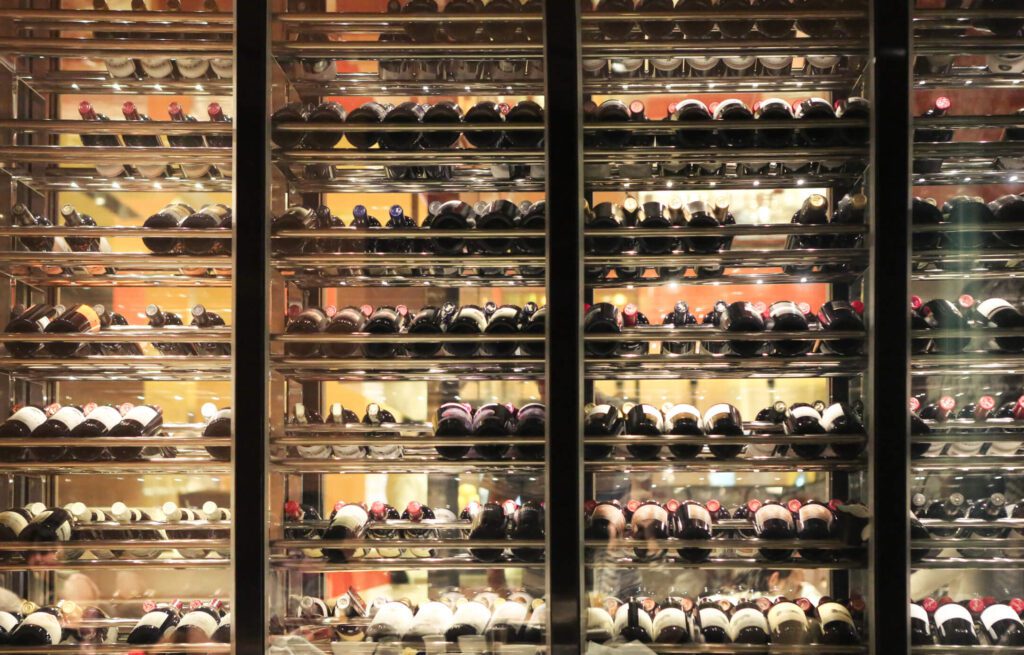
There is certainly something idyllic about sipping a glass of fine wine on the deck of a ship while watching the sunset over a horizon. However, between the constant movement of the rolling seas and the unique climate, maintaining an elegant wine collection aboard a seafaring vessel may seem more trouble than it is worth. In fact, there may be no application more complicated than aboard a yacht. With today’s sophisticated climate-controlled technology, designing and installing wine cellars on yachts can be made a reality. The key lies in understanding the obstacles and knowing which cooling system features will overcome them.
The Challenges
Simply put, there is nothing easy about installing wine cellars on yachts of any kind. How does one circumvent the salty air or find a way to exhaust hot air from below deck? A cooling system will need to be versatile enough to endure the complex installation requirements and robust enough to meet the demands imposed by such a hostile, ever-changing climate. However, often the installation and environmental challenges can be addressed with the right wine cooling system.
Installation Considerations
Unstable Conditions
Unsurprisingly, the constant movement of the water and vibration from a ship’s engine seems incompatible with wine storage and aging. You’ll need to ensure stable racking of bottles, so bottles don’t slide during the yacht’s movement.
In addition, yachts and superyachts require a more stable environment for the wine cellar’s cooling system. A stable environment can be achieved, but the installation of a cooling unit will require a gimbal system. A gimbal is a pivoted support that keeps objects on a boat in line with the horizon even when a ship is pitching up and down. It is essential to select a wine cooling unit that is versatile enough to integrate with a gimbal system.
Where To Exhaust
One might think that exhausting hot air without disrupting the aesthetic of the space might be challenging when a wine cooling system is located in the bowels of a ship. If space is limited, a unit that is able to accommodate extended lengths of ductwork can be helpful. Wine Guardian provides a ductwork calculator to help wine cellar owners explore their options.
Another clever way to remove heat from the condenser is to utilize water instead of air. Water-cooled systems require no hot air venting, but they do rely upon a steady stream of water that moves heat away via piping or ductwork. Wine Guardian offers water-cooled options on ducted units in a number of cooling capacities. Salt-water applications require special water-cooled condensers, typically with a protective cupro-nickel condensing coil to remove heat from the system.
Light
Lighting is an important design element to yacht owners eager to add wine walls and rooms to their luxurious yachts. Depending upon the location of the wine display, sunlight has the potential to compromise the integrity of the wine. Whether natural or artificial, light generates heat which is damaging to wine. It is critical to incorporate a powerful enough cooling system to maintain a pristine climate-controlled environment in a location that is protected from intense UV light.

Environmental Considerations
Corrosive Sea Air
Humid, sea air is extremely corrosive to wine cooling system components. In particular, the salt in the air is highly damaging to condensing units and evaporator coils exposed to sea air. Left untreated, condenser coils exposed to sea air and spray will start degrading within a few hundred hours.
Wine Guardian has devised several strategies to combat the harsh sea air. One way to prevent premature corrosion of coils is to coat them with an E-coating which will extend the life of the coil. Make sure you request this when ordering a system since it’s not a feature of standard wine-cellar cooling systems.
Fluctuating Ambient Temperatures
High Temperatures
Yachts traverse the seas, often moving through a variety of climates. Wine cooling systems may struggle to function optimally through higher and lower than average ambient temperatures. For instance, if the condenser is located outside and is exposed to temperatures above 95°F (35°C) or if the intake air from a hot climate is ducted to the condenser or a self-contained unit, high-ambient (high-temperature) control options will be necessary.
Wine Guardian has solutions specifically engineered for high-ambient-temperature environments that are well suited to yacht applications. Several fully self-contained, ducted solutions are available with a high-ambient option manufactured to protect small to medium-sized applications from temperatures up to 115°F (46°C).
Wine Guardian’s ducted split wine storage cooling units are an option for vessels that have no extra space to install self-contained systems or applications where condenser air is difficult to exhaust. All of these standard split systems operate between 20°F and 115°F (-18°C and 46°C) and are durable enough to operate in hot climate wine rooms and displays of any size.
Low Temperatures
On the other end of the continuum, low-ambient (low-temperature) controls are needed when the condenser is exposed to outdoor temperatures below 40°F (4°C) or if outside air below this threshold will be ducted into the condenser. Low ambient controls are standard on ducted split systems and can be added to Wine Guardian ducted cooling units of any size as they navigate through cold climates.
Low Ambient Protection has two main components. First is a crankcase heater, which keeps the oil within the system at elevated temperatures so it doesn’t freeze. Second is a fan cycling switch, which turns the condenser fan on and off to keep the refrigerant pressures within preset levels and provides airflow control over the condenser.
Powering A System
Electrical supply on yachts is typically 60hz even if a ship is built in Europe. Wine Guardian offers cooling units that accommodate either 60hz or 50hz power supply, meaning you’ll have a solution no matter how your yacht or superyacht is designed.
Being aware of the installation challenges and unique environmental factors associated with wine cellars on yachts is a critical first step. From there, a seasoned contractor and the just-right wine cellar cooling system will make the dream of having an elegant wine display aboard a yacht a reality. Bon, voyage!

